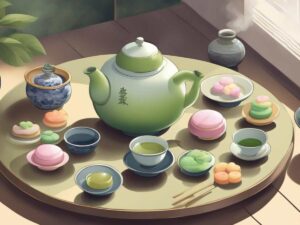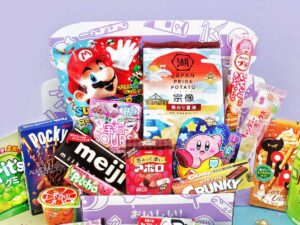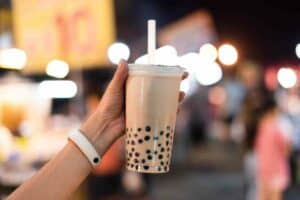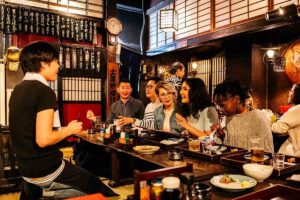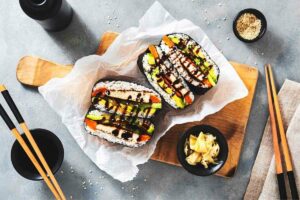Makgeolli often anglicized as makkoli, is an off-white, milky raw rice wine that is lightly sparkling.
Its cloudy appearance is due to chalky sediment.
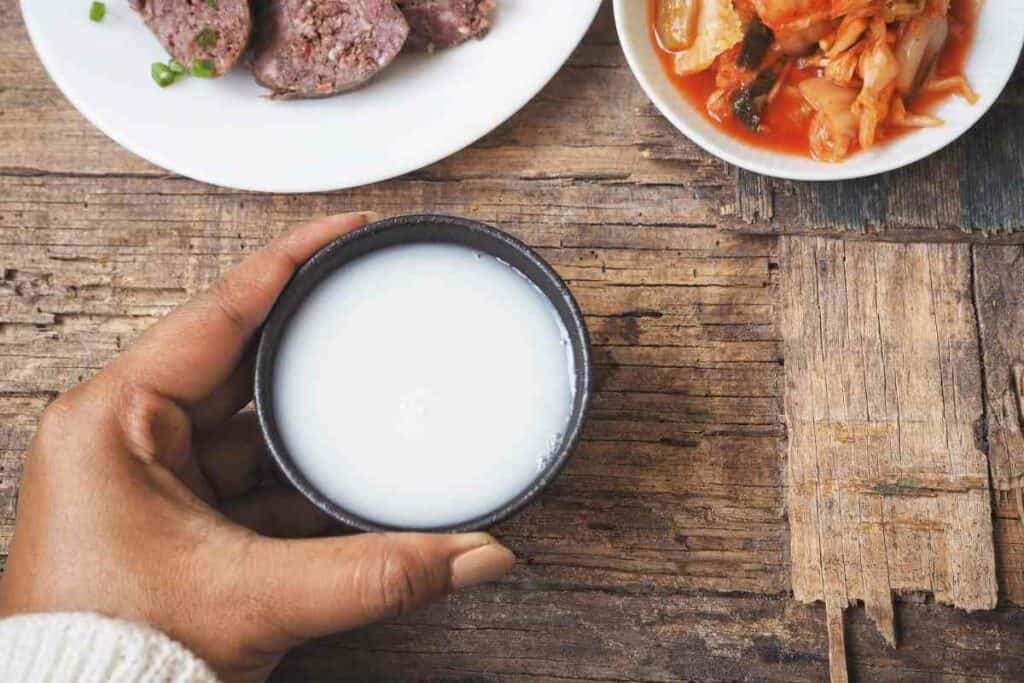
It is a low-alcohol drink, typically between six and nine percent proof, and it has a tangy, bitter, and slightly sweet taste.
But what is the history behind this drink and how do you drink it?
Let’s find out.
Table of Contents
Makgeolli History
Traditionally, makgeolli is a Korean beverage.
In fact, it is the oldest alcoholic drink in the country and dates from the first century.
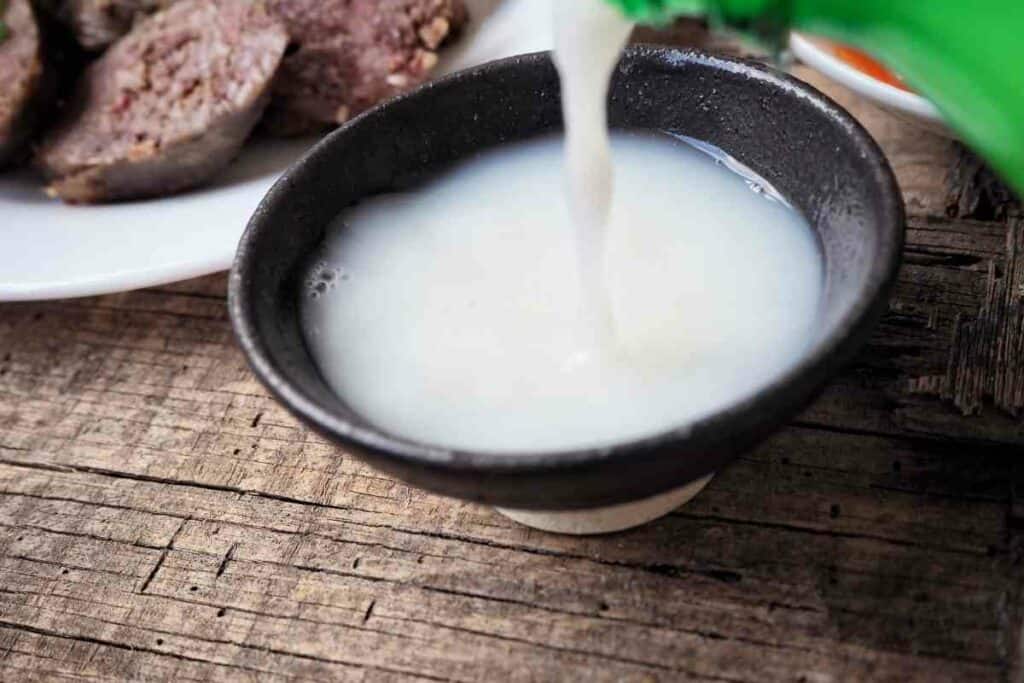
For centuries, makgeolli was brewed at home and so was considered to be a working-class, rural “farmer’s wine”.
It was actually the most consumed South Korean alcoholic drink during the 60s and 70s but began declining in popularity shortly after due to imports of other alcohols.
At this time, there was also a national shortage of food and so making makgeolli was banned as it used up rice.
People tried to make it with wheat flour and corn, but the quality wasn’t as good.
Since the turn of the century, there has been a sudden resurgence of makgeolli with young people beginning to get a taste for the drink.
With people more and more concerned about their health, this low-alcohol beverage has seen a growing interest.
What’s More: People have started to enjoy exploring former traditions too. The drink is still inexpensive too.
How is makgeolli made?
This drink is made from rice and nuruk, which is a dry, fermented cereal cake.
Nuruk, steamed rice, and other flavorings are mixed together. They’re put into onggi, which are the same vessels that are used for making soy sauce and kimchi.
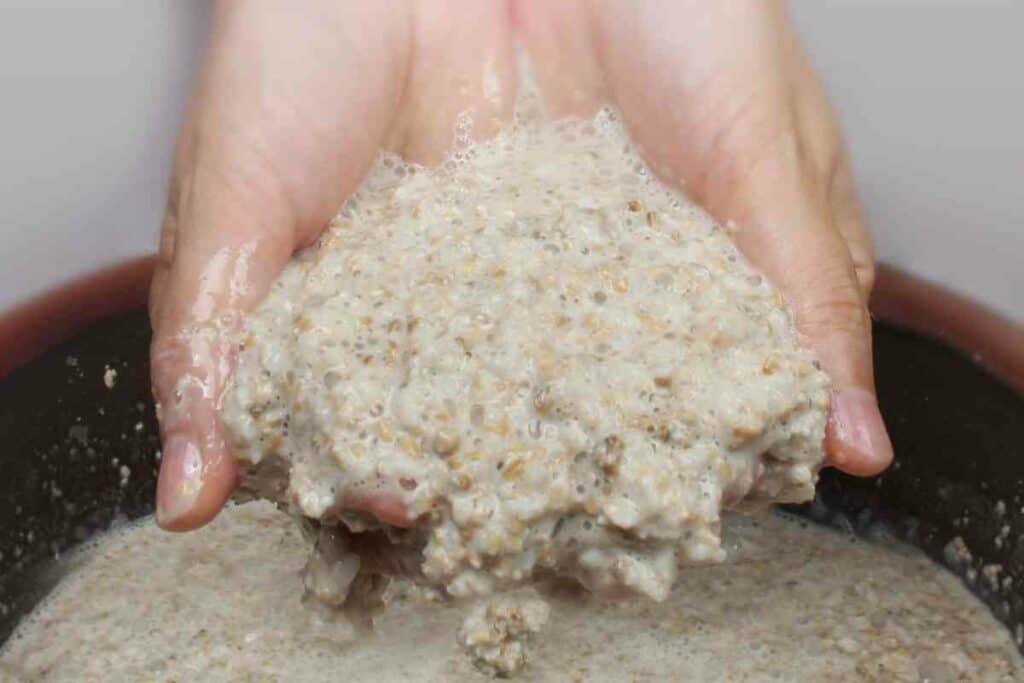
The drink is left to ferment, then consumed between one and two weeks after it has brewed. It is mild and creamy when fresh.
Keep In Mind – If left, it will turn into rice vinegar.
How to drink makgeolli
Typically, makgeolli is served chilled.
It is usually served in a bowl and stirred before drinking.
This is because it tends to split with sediment sinking to make a cloud, white liquid at the bottom with a paler yellow liquid at the top.
Why is makgeolli served in a bowl?
Since makgeolli was originally a farmer or laborer’s drink, it wasn’t something that was sipped delicately after they’d returned from working in the fields all day.
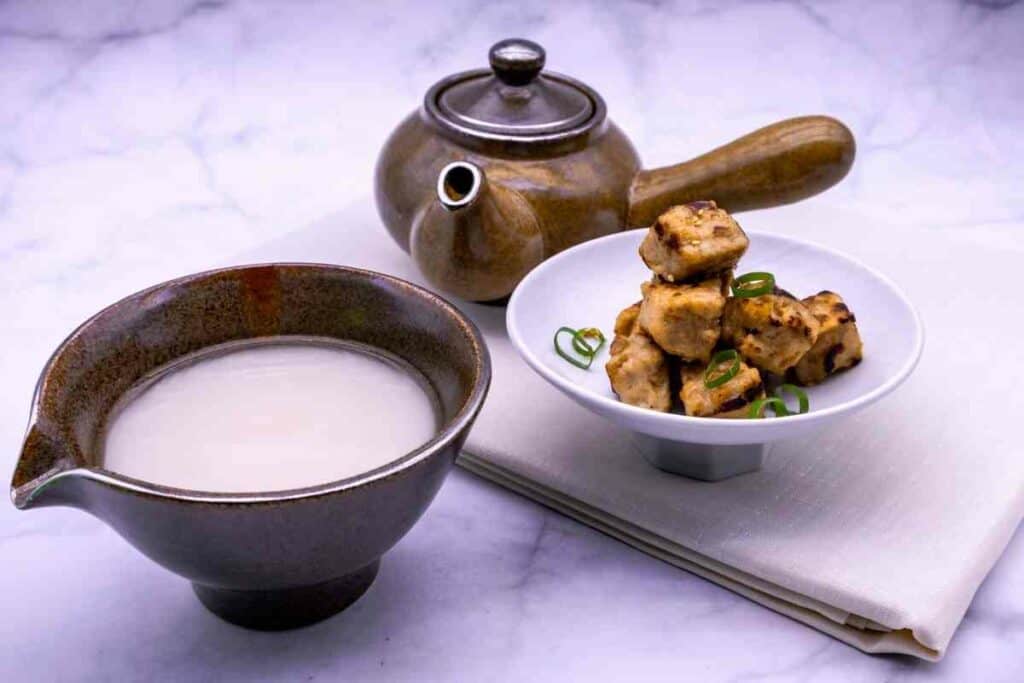
With a bowl, it’s much easier to gulp down and enjoy. It’s really for nostalgia and tradition that makgeolli is served and drunk in bowls today.
The traditional way how to drink makgeolli involves pouring it from a kettle.
It is seen as polite to pour the drink for each other using one hand to hold the kettle and the other to support the wrist.
Tradition says that when drinking, people must turn themselves away from their elders.
The popularity of makgeolli in Japan
In Japan, the popularity of makgeolli is on the rise.
In 2008 alone, almost 90% of South Korean makgeolli was exported to Japan. It’s no wonder it’s a hit, though.
As the Japanese are pretty health conscious and like that it contains lactic acid, which apparently reduces blood pressure, lowers cholesterol, and boosts the immune system.
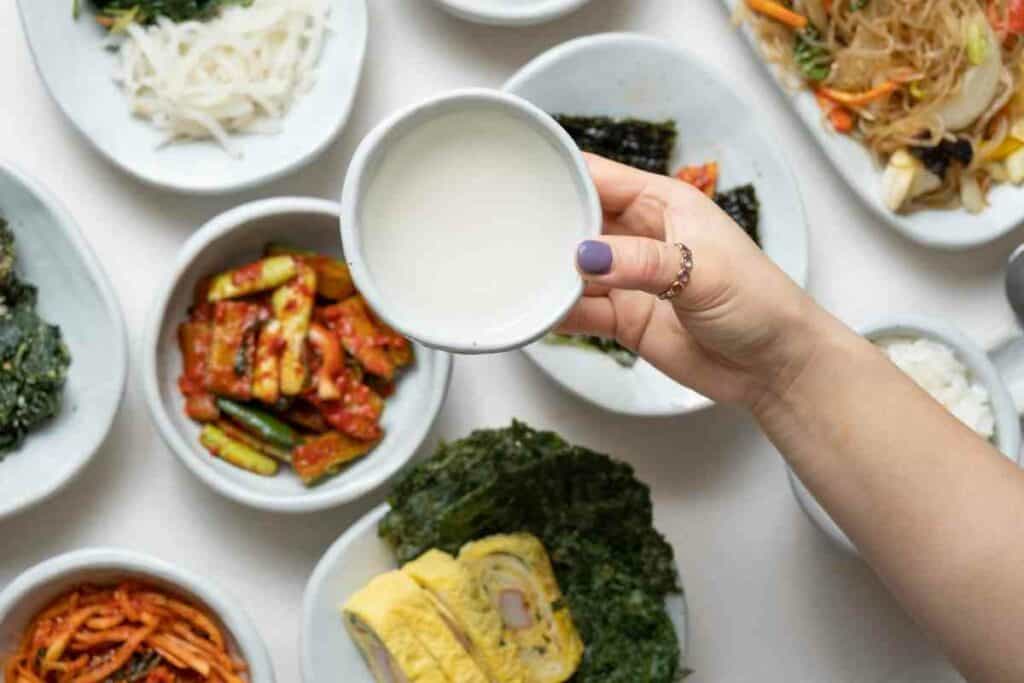
The problem with makgeolli, however, is that it has come to be known as a hillbilly, elderly drink in its native country.
Unlike Japanese rice wine, which went on to become the drink of emperors and Shinto gods, makgeolli didn’t develop the same reputation.
In Japan – You’ll find numerous makgeolli drinking joints with some serving the brew in old-fashioned glasses and others presenting it in a more traditional way of bows and kettles.
Surprisingly for Koreans, makgeolli’s popularity in Japan has seen Koreans rethink their opinion of this drink.
Variations of Makgeolli
Though the traditional-style home brew makgeolli is the most popular, there are lots of different variations nowadays.
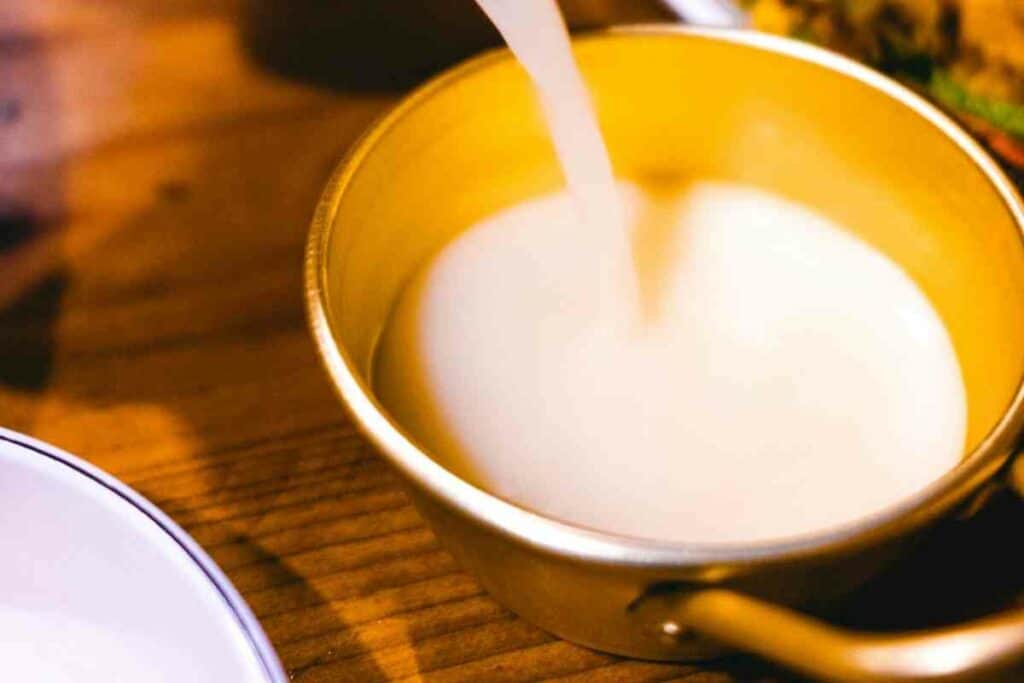
You can get flavors like chestnut, black bean, pumpkin, and even okoge, which is the crusty rice you’ll typically find at the bottom of a rice cooker!
Most people drink it straight, but you can also mix it with soda.
When makgeolli is unpasteurized, it can mature in its bottle, which will produce more complex flavors.
However, it’s served fresh more commonly.
Here are some popular makes of makgeolli and their added ingredients:
- Saeng makgeolli – lactic acid, citric acid, rice flavors, glucose, phenylalanine, and carbon dioxide.
- Uguk Saeng – licorice and aspartame
- Guksundang Ssal makgeolli – high fructose corn syrup, lactic acid, citric acid, carbon dioxide.
- Yidong Ssal makgeolli – aspartame (this is pasteurized)
- Seoul Jangu Saeng makgeolli – red ginseng, maltooligosaccharides, aspartame, and citric acid.
How to drink makgeolli with foods
Traditionally, makgeolli would be paired with:
- bar food
- green onion pancakes
- or mung bean pancakes
Many people think it goes well with seasoned barbecued beef too.
Other pairings include kimchi, kimchi pancakes, and grilled meats.
Health benefits of makgeolli
Despite being an alcoholic drink, which we’d usually consider unhealthy, there are many health benefits of makgeolli.
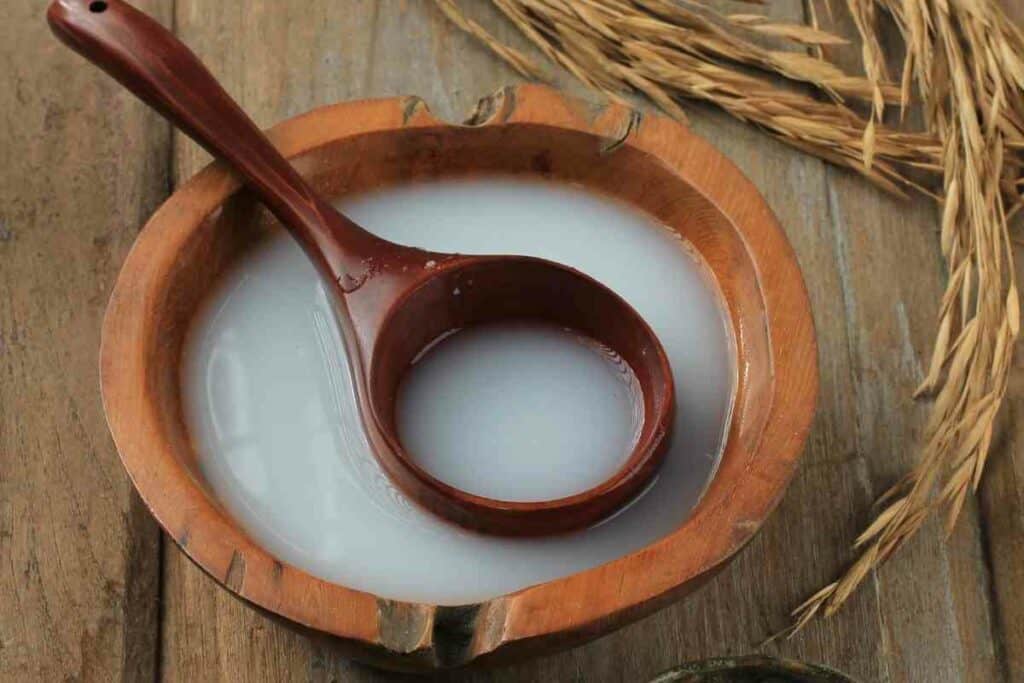
If the drink is brewed traditionally, it contains millions upon millions of live cultures in one milliliter alone.
What’s More – It’s low in cholesterol, and high in vitamin C, vitamin B, and fiber.
It is also high in carbohydrates and 100ml is around 54 calories. This was a good thing in the traditional days when laborers would need a high-calorie intake.
Final thoughts
Though makgeolli is relatively new in Japan, it’s a very ancient drink in Korea.
And though it is increasing in popularity more and more, many Koreans still believe it to be a hillbilly drink for the elderly.
When it comes to how to drink makgeolli, there’s only one thing that really matters: that it’s served ice cold.
Whether you choose to drink from the traditional kettle and bowl, a glass, or straight from the bottle is up to you!
You Might Also Read
- Japanese Traditional Sweets (Wagashi): A Guide to Their Origins and Varieties
- A Taste of Japan in Every Bite – Japanese Candy & Snack Box Review
- Bubble Tea vs Boba Compared: What’s the Difference?
- Best Izakaya Foods for a Relaxed Night Out (My Top 10 Picks)
- Edo Kiriko Whiskey Glasses (Japanese Heritage in Every Pour)
- Japanese Viral Foods on Social Media (Discover the Top 10)

